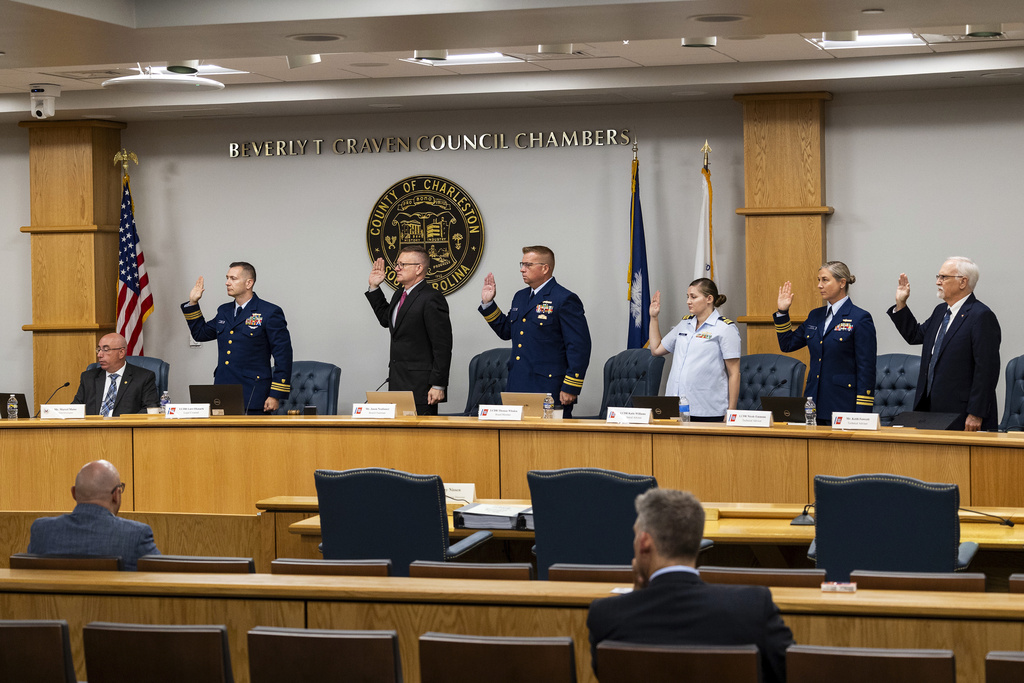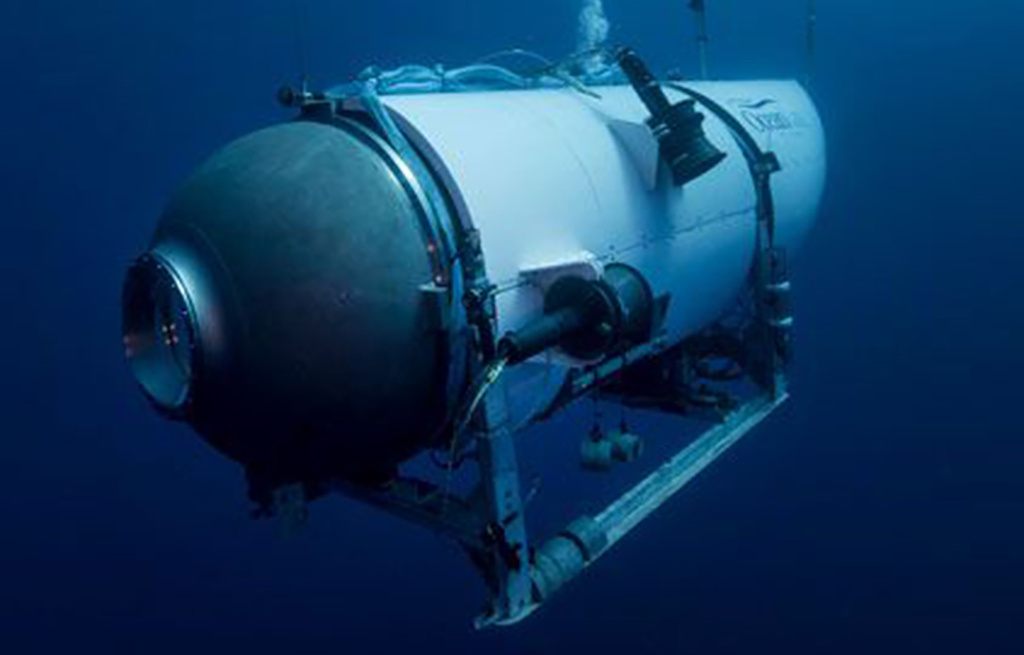OceanGate Engineer: “I’m Not Getting in It” Before Titan Implosion \ Newslooks \ Washington DC \ Mary Sidiqi \ Evening Edition \ OceanGate’s former lead engineer, Tony Nissen, testified that he refused to pilot the Titan submersible due to safety concerns years before its fatal implosion in 2023. Nissen revealed that he felt pressured by co-founder Stockton Rush to expedite the Titan’s development, though he repeatedly warned about unresolved issues. The U.S. Coast Guard is holding a hearing to investigate the causes of the tragedy.
“Titanic Submersible Tragedy” Quick Look
- Engineer’s warning: Tony Nissen refused to pilot the Titan, citing safety concerns and pressure to meet deadlines.
- Titan’s implosion: The submersible imploded during a dive to the Titanic wreck in June 2023, killing all five aboard.
- Hearing focus: The U.S. Coast Guard hearing is reviewing safety procedures and the company’s practices leading up to the disaster.
- Lightning strike incident: Nissen noted a previous lightning strike in 2018 that may have compromised the Titan’s hull.
- Investigations ongoing: The Marine Board of Investigation continues, with several more witnesses set to testify.

Deep Look
The U.S. Coast Guard hearing into the tragic implosion of OceanGate’s Titan submersible began with testimony from the company’s former lead engineer, Tony Nissen. Speaking on Monday, Nissen outlined a troubling pattern of rushed decisions and safety concerns that plagued the project well before the vessel’s fateful dive to the Titanic wreck in June 2023. Nissen stated that he had refused to pilot the submersible on earlier dives, citing a lack of confidence in the crew’s ability to ensure safe operations.
During his testimony, Nissen described the immense pressure he felt from OceanGate co-founder Stockton Rush to get the submersible ready for diving, despite unresolved safety issues. Nissen recounted telling Rush, “I’m not getting in it,” reflecting his refusal to board the Titan due to significant doubts about the vessel’s readiness. Nissen’s account, given in North Charleston, South Carolina, marked the beginning of what is expected to be a two-week-long hearing.
OceanGate Internal Tensions and Rush’s Influence
Nissen provided further details about working under Rush, noting that the company’s CEO was difficult to work for, often prioritizing cost savings and fast timelines over safety. He described how Rush’s priorities frequently changed, leading to clashes between the two. Despite these tensions, Nissen said he tried to keep these disputes private, so they wouldn’t affect other employees at OceanGate.
“Most people would eventually just back down to Stockton,” Nissen explained, suggesting that Rush’s influence often overrode safety concerns. This corporate culture of pressure, Nissen indicated, contributed to an environment where decisions were made without thorough testing or independent reviews of the submersible.
Safety Concerns and Early Setbacks
In 2018, during one of the Titan’s test missions, the vessel was struck by lightning, an incident that may have compromised the integrity of its hull, Nissen testified. He also discussed how in 2019, he halted a mission to the Titanic, telling Rush that the Titan was “not working like we thought it would.” Nissen was fired later that year, and the vessel underwent additional testing before it was eventually used in successful dives to the Titanic wreck in 2021.
When asked whether he felt the pressure from Rush affected safety protocols and testing, Nissen gave a measured response. He acknowledged that under ideal circumstances with “infinite time and infinite budget,” more testing could have been conducted, but did not directly accuse Rush of compromising safety outright. However, his remarks highlighted the challenges the team faced in balancing innovation with thorough safety evaluations.
Titan’s Final Journey and Tragic Implosion
The Coast Guard revealed that before the Titan’s catastrophic implosion on June 18, 2023, the vessel had been exposed to harsh elements while in storage for several months. Coast Guard officials also noted that the Titan’s hull had never undergone a third-party safety review, a standard practice for submersibles.
One of the final messages from the Titan’s crew to its support ship, the Polar Prince, stated, “all good here,” before communication was lost. Subsequent exchanges about the submersible’s depth and weight revealed that something had gone wrong, but the support crew was unable to re-establish contact. The Titan imploded during its descent, killing all five on board, including Rush.
OceanGate, the Washington state-based company that owned and operated the Titan, has since suspended operations. Bonnie Carl, the company’s former finance and human resources director, also testified on Monday, acknowledging that she had been aware of safety concerns. She mentioned that OceanGate’s operations director, David Lochridge, had referred to the Titan as “unsafe.” Lochridge is expected to provide testimony later in the hearing.
Ongoing Investigation and Public Scrutiny
The tragedy set off a worldwide debate about the safety of private undersea exploration and the responsibilities of companies like OceanGate in ensuring their vessels meet rigorous safety standards. The U.S. Coast Guard’s Marine Board of Investigation, the highest level of marine casualty inquiry, is conducting an extensive review of the incident. Representatives from the National Transportation Safety Board (NTSB) are also participating in the investigation, with a final report expected once the hearing concludes.
In their initial statements, Coast Guard officials emphasized the importance of determining the causes of the Titan’s implosion in order to prevent future tragedies. “There are no words to ease the loss endured by the families impacted by this tragic incident,” said Jason Neubauer of the Coast Guard’s Office of Investigations. “But we hope that this hearing will help shed light on the cause of the tragedy and prevent anything like this from happening again.”
The investigation has already revealed that safety procedures at OceanGate may not have aligned with industry standards, particularly in terms of structural assessments and the review process. The lack of an independent third-party inspection of the Titan’s hull, along with its unconventional design, subjected the vessel to significant scrutiny within the undersea exploration community.
U.S. Coast Guard Hearing
As the hearing continues, several key witnesses are set to testify, including OceanGate co-founder Guillermo Sohnlein and former scientific director Steven Ross. Numerous other experts from the Coast Guard, marine safety authorities, and industry professionals are expected to provide testimony on safety protocols, engineering challenges, and the circumstances leading up to the fatal dive.
Notably absent from the witness list is Wendy Rush, Stockton Rush’s widow and OceanGate’s communications director. Despite her absence, spokesperson Melissa Leake clarified that the Coast Guard may hold additional hearing sessions or conduct witness depositions, as is common practice in complex cases like this one.
OceanGate, which currently has no full-time employees, is being represented by an attorney during the hearing. The company has maintained that it is fully cooperating with all investigations.
Timeline of Events and Next Steps
The search for the Titan and its crew dominated headlines in June 2023, as international efforts mobilized to locate the submersible after it lost contact with the Polar Prince. It was eventually discovered that the Titan had imploded, with wreckage found on the ocean floor approximately 330 yards from the bow of the Titanic. The full investigation, initially expected to take a year, has taken longer due to the complexity of the case. Once the current hearing concludes, recommendations will be sent to the Coast Guard commandant for review.
Meanwhile, the NTSB’s separate investigation continues to run in parallel, ensuring that all aspects of the tragedy are thoroughly examined. The findings from both investigations will likely influence future regulations and safety protocols for undersea exploration.







